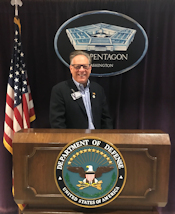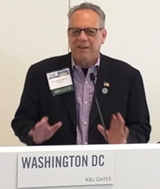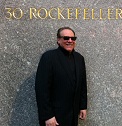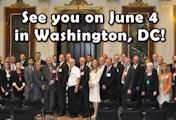NanoBCA Encourages Your Response to NNCO & OSTP Request
Posted on February 23rd, 2016 | No Comments »
The NanoBusiness Commercialization Association (NanoBCA) encourages all members of the nanotechnology community to respond to this request from the National Nanotechnology Coordination Office (NNCO) and the Office of Science and Technology Policy (OSTP). The following information was presented on the White House blog by Michael Meador, Director of the NNCO at the White House National Science and Technology Council and by Lloyd Whitman, Assistant Director for Nanotechnology and Advanced Materials at the White House OSTP.
Identifying Commercialization-Success Stories from the National Nanotechnology Initiative
By Michael Meador and Lloyd Whitman
Twitter Facebook Email
Summary: The White House is seeking examples of commercialization-success stories stemming from U.S. Government-funded nanotechnology research and development.
Today, the White House Office of Science and Technology Policy and the National Nanotechnology Coordination Office issued a Request for Information (RFI) seeking examples of commercialization-success stories arising from Federal investments in nanotechnology research & development since the inception of the National Nanotechnology Initiative (NNI) in 2001. Under the NNI, the U.S. government has invested more than $22 billion in fundamental and applied research in nanotechnology; the development of world-class user facilities for fabrication, characterization, and modeling/simulation of nanomaterials; and the responsible development of nanotechnology. The purpose of the RFI being released today is to gather information to better understand how these investments and resources have been utilized to successfully transition nanotechnology-based products from the lab to the market.
In his 2014 State of the Union Address, President Obama said, “Federally-funded research helped lead to the ideas and inventions behind Google and smart phones” and can “unleash the next great American discovery – whether it’s vaccines that stay ahead of drug-resistant bacteria, or paper-thin material that’s stronger than steel”. Nanotechnology researchers and entrepreneurs are making these innovations—plus many others—a reality. For example, pioneering nanotechnology research by two 2015 National Medal of Science and one National Medal of Technology and Innovation recipients has found its way into multiple commercial products. Quantum dots, developed by Dr. Armand Paul Alivisatos, can now be found in energy-efficient solid-state lighting and high-resolution video displays and televisions. Novel nanofabrication techniques developed by Dr. Joseph DeSimone are being put to work producing highly effective platforms for the controlled delivery of vaccines and therapeutics. Fin-FETs, which are 3D, nanometer-scale transistors co-invented by Dr. Chenming Hu, are used extensively in the latest computer chips. And there are dozens of companies involved in creating products that take advantage of the incredible electrical and mechanical properties of carbon nanotubes and graphene, such as data cables that are up to 70% lighter than traditional copper cables, and fibers that have more than 20 times the specific strength of steel.
While not every nanotechnology lab-to-market success can be recognized by the President, we are sure that there are many exciting examples out there that we have yet to learn about. And we suspect that many of these have been supported or helped along by Federal investments under the NNI. Have you been involved in the successful commercialization of a nanotechnology-enabled product? Was this success aided by Federal funding through a research grant or contract, collaboration with a scientist or engineer at a Federal lab, access to one of the many nanotechnology-user facilities, or based, in some way, on intellectual property arising from Federally-funded R&D? If so, tell us your story by responding to today’s RFI.
CLICK HERE to submit your examples of commercialization-success stories stemming from U.S. Government-funded nanotechnology research and development.
Michael Meador is the Director of the National Nanotechnology Coordination Office at the White House National Science and Technology Council.
Lloyd Whitman is Assistant Director for Nanotechnology and Advanced Materials at the White House Office of Science and Technology Policy.
Learn More:
- Request for Information: Nanotechnology Commercialization Success Stories
- Official web site of the National Nanotechnology Initiative
- National Medal of Science and National Medal of Technology and Innovation
————————————————————————–
NANO NEWS
NNCO Highlights a Suite of Educational Activities
As highlighted in the White House blog today, the National Science Foundation (NSF), in partnership with NBC Learn, has launched Nanotechnology: Super Small Science, a series of videos for middle and high school students.
Can Nanotechnology Lead To Advanced Weapons?
By Jim Phillips – NanoMech
PEN Inc. Announces 1-for-180 Reverse Stock Split
Market Wired
Inside The White House Roundtable On Water Innovation
By Peter Chawaga
Role of Nanomanufacturing in Wearable Sensor Technologies
National Nanomanufacturing Network
mPhase Technologies Says Its New Drug Delivery System Could Prove Very Useful for Diabetics
Public.
2016 USA Science & Engineering Festival
FREE: Expo April 16 & 17
Washington, DC
————————————————————————–
CORPORATE MEMBERSHIP
Please join our roster of Corporate Members. For further information, please contact Vincent Caprio vincentcaprio@nynanobusiness.org or 203-733-1949 to discuss.
————————————————————————–
INDIVIDUAL MEMBERSHIP
We encourage individuals interested in continuing our efforts to provide information in regard to emerging technologies to become Individual Members of the NanoBCA. Individual Membership includes participation on our monthly conference call. Our next call is on Thursday, February 18th at 2PM ET. Click here to become a NanoBCA Individual Member. The annual Individual Membership fee is $150.
————————————————————————–
Once again, we encourage all of you to CLICK HERE to submit your examples of commercialization-success stories stemming from U.S. Government-funded nanotechnology research and development.




